
Grants SUMMER 2023 NEWSLETTER
the world comes to Queens WHAT’S INSIDE Everlasting commitments to causes Alliance reclaims the Bronx River page 14 pages 8-9 pages 4-6
Why
The New York Community Trust is New York City’s community foundation.
We connect generous people and institutions with high-impact nonprofits making New York City, Long Island, and Westchester better places for all.
We foster community, engage public policy, drive innovation, improve lives, and safeguard our environment.
We’d like to hear from you.
Please contact us with questions or comments: (212) 686-0010 or info@nyct-cfi.org
Congrats...
The Trust welcomes two outstanding new members to our Board of Directors: Kevin Byrne and Bruce Holley. Byrne, who has chaired our Investment Committee for more than a decade, is a former CEO of Pacific Global Asset Management. Holley is a senior managing director at Accenture, where he leads its Financial Services Customer Insight and Growth practice in North America. Before that he was senior partner and managing director of The Boston Consulting Group and a vice president at J.P. Morgan.
Trust President Amy Freitag was included among Crain’s New York Business’ “2023 Notable LGBTQIA+ Leaders,” which called the honorees “pacesetters who are driving equity and inclusion.” In addition, she was interviewed on the We Are For Good podcast about reimagining the future of community foundations. https://www.weareforgood.com/episode/435
Arturo Garcia-Costas, The Trust’s program officer for the environment, was recently named a “Notable Leader in Sustainability” by Crain’s New York Business and a “Power Player in Climate, Energy and Sustainability” by Politics/NY and amNY Metro.
Recommendations from our staff
ON THE COVER: Two city icons in
Meadows
High-Risers: Cabrini-Green and the Fate of American Public Housing by Ben Austen
Recommended by Chantella Mitchell, Trust program officer for community development, housing, and human services. “This book about a public housing development in Chicago that was eventually razed is a detailed political history of failed policies, but also a respectful tribute to the displaced community of families, activists, and artists that called it home. I enjoyed the writing and learned a lot about the intersection of public policy, people, and politics.”
The World Eats Here by John Wang and Storm Garner
Recommended by Marty Lipp, director of communications. “In a borough where 300 languages are spoken, it’s not surprising New Yorkers serve up a kaleidoscopic array of foods. Taking full advantage of that, the Queens Night Market, which runs through the summer in Flushing Meadows Corona Park, features dozens of pop-up stands selling small plates. This book collects 80 recipes from 45 countries accompanied by stories about the vendors. Like the market, the book is a wonderful reminder of how immigrants have made the city so remarkable.”
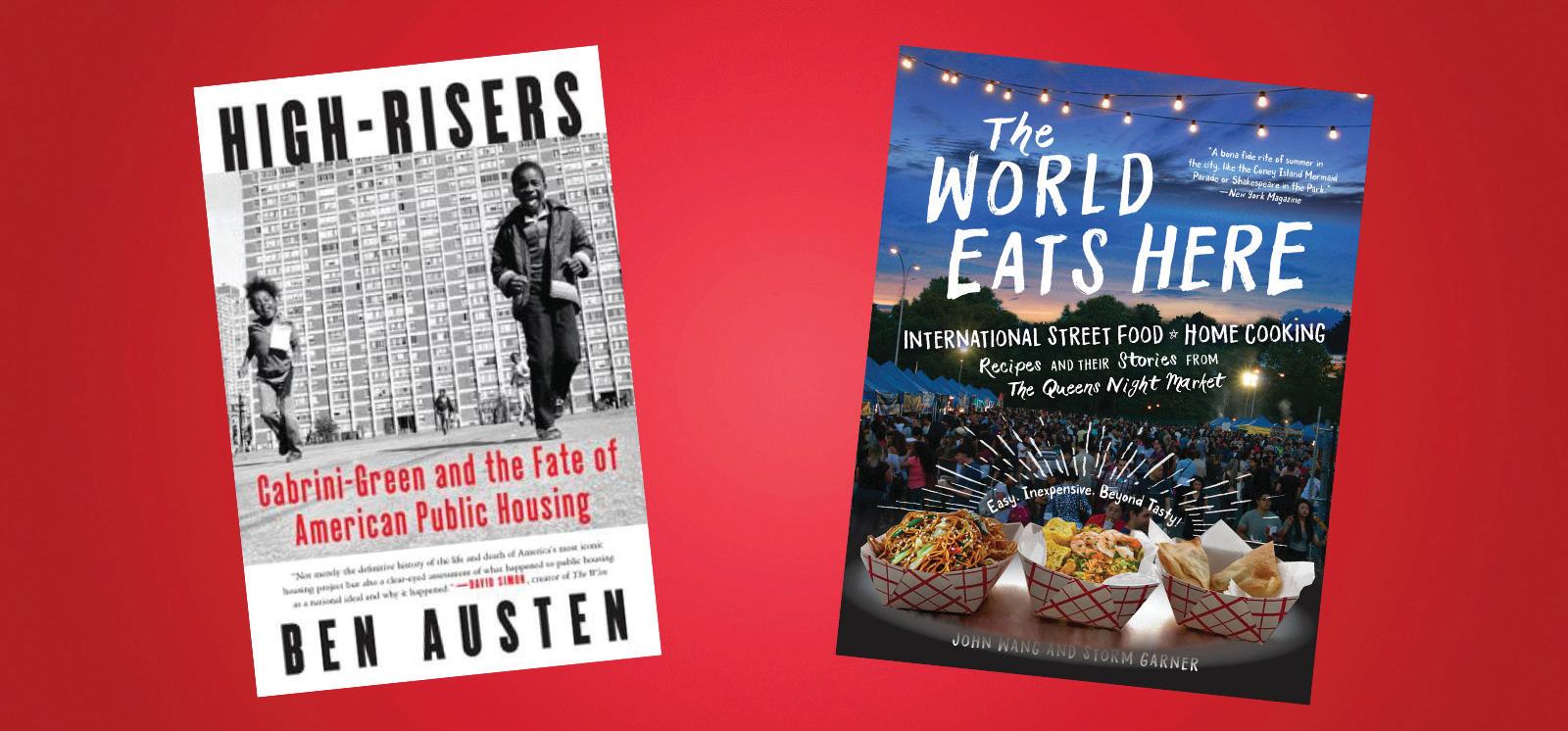
WELCOME nycommunitytrust.org 2
Flushing
Corona Park—a Mister Softee truck and the Unisphere, the world’s largest globe. Photo by Andre Legaspi
A look back at helping the city thrive
PATRICIA SWANN
Patricia Swann anchored The Trust’s grantmaking for community development, affordable housing, civic affairs, and technical assistance for more than 20 years. She is a co-chair of the GoVoteNYC donor collaborative, former chair of the New York State Census Equity Fund, and former co-chair of the Capital Change Fund. She began working at The Trust in 1999 and transitioned to a part-time role earlier this year.
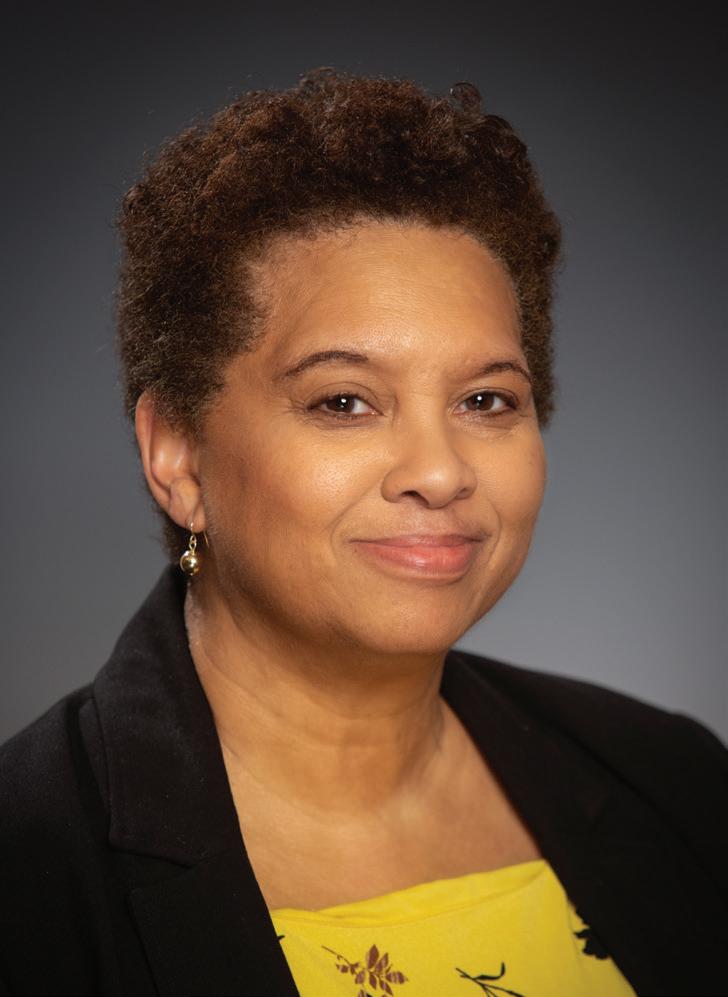
What changes in philanthropy have you observed over the years?
Change has always been with us. But in my 20-plus years in philanthropy, the pace of change seems to have accelerated exponentially. New issues emerge that cry out for philanthropic response (e.g., climate change). And old problems keep evolving, requiring new thinking about how the philanthropic and nonprofit sectors should best respond (e.g., homelessness, immigration), especially in light of government responses that are often inconsistent or incoherent.
As if that weren’t enough, natural and/or man-made catastrophes are always lurking. In my time at The Trust, New York City has experienced a terrorist attack, a global pandemic, climate change-driven weather events with tragic results, and an economic recession—all unforeseen, with unpredictable consequences that
often take some time to play out. This highly accelerated pace of change means that philanthropic institutions have to be extremely nimble to be effective.
What have you learned during your time at The Trust?
I learned to be humble. When I first started, I thought I could make a dent in much of what ailed New York with a $4 million grant budget! Clearly, resources are important, but I learned that money isn’t enough. Black Lives Matter gained traction across all sectors of American society (and the world), despite the fact that it was mostly an “unfunded” movement. As a program officer, it’s tempting to think that enough grants over time to the right groups can fix anything. But I learned that we have so much more to offer to our peers, to our grantees, and to society at large, than simply being a connection to a grant. In fact, having an ally
who is a few steps away from the actual on-the-ground work can be helpful. For example, The Trust can introduce advocacy groups to potential allies they may not be aware of. Or we can connect grantees to groups doing similar work so that they can compare strategies and share approaches that have worked—or not.
What is your hope for the future of philanthropy?
My hope is for a stronger commitment to use philanthropic institutions’ resources to change society, and less emphasis on viewing philanthropy as a safety net back-up when government falls short. This means being bolder in advocacy, whether raising our collective voices directly, or giving our nonprofit allies the support they need to speak with conviction and confidence on the issues that we all care about. n
Grants Newsletter | Summer 2023 3
FROM THE DESK OF...
I learned that we have so much more to offer to our peers, to our grantees, and to society at large, than simply being a connection to a grant.”
Photo by Ari Mintz
Why the world comes to Queens
American enclaves of southeastern Queens, The Trust works to create a more vital, more equitable borough for all.
MEETING IMMIGRANTS’ NEEDS
Nearly half of Queens residents were born outside the United States. They come seeking safety or economic opportunity; many burrow into the support and familiarity of established ethnic communities. One of the latest waves of new arrivals came after the U.S. withdrew troops from Afghanistan in 2021. To help resettle refugees, Women for Afghan Women has used Trust support to increase staffing for their social services and legal assistance.
“People had to run for their life,” said Naheed Samadi Bahram, U.S. country director of the Queensbased group. “They literally locked their door and ran to the airport to get out. Many had just a small backpack and a lot lost those backpacks on their way here, so they literally had nothing. And many people came with a lot of trauma.”
The small nonprofit began getting 300 calls a day for assistance. The group helps women learn English, manage finances, train for jobs, address legal needs, and cope with trauma.
With more than 300 languages and dialects spoken in the borough’s homes, streets, and storefronts, the genius of Queens is its ability to provide a pathway to the middle class for so many people—across cultures and decades.
Home to Louis Armstrong, Run DMC, Tony Bennett, Cyndi Lauper, the Amazin’ Mets, and two World’s Fairs, the borough has the largest working farm in the city, a major movie studio, and two of the world’s
busiest airports.
Over the years, The Trust’s grantmakers have used their expertise and insights into neighborhoods to make gamechanging grants for the entire borough and for particular communities, such as “Little India,” “Little Colombia,” “Little Manila,” and the multicultural area dubbed “Flushing’s Chinatown.”
Whether quickly sending aid to emigres fleeing war or patiently pushing for changes in African
“Definitely everybody came together to try to help,” Samadi Bahram said, adding that the local Afghan community organized clothing drives, raised funds, and hosted refugees.
“People who came two years ago are going to college now,” she said, while also noting that there is still a long way to go for many. “There are people who have gotten jobs, secured housing, enrolled their kids in school, become independent, and are supporting their families. The past two years were difficult, but

nycommunitytrust.org 4 SPOTLIGHT An in-depth look at The Trust’s grantmaking in Queens
HELPING HANDS: Local residents organized a drive to collect urgently needed items for recent refugees from Afghanistan.
now we see the fruits of our work.”
Another important Trust grant targeted the needs of Asian American adults with developmental disabilities, who have the lowest employment rate among all ethnic groups and are least likely to be connected to available services. The Community Inclusion & Development Alliance is expanding a workforce development program that focuses on the individual needs of each participant, offers workshops to parents, and identifies potential jobs and paid internships.
COMMUNITIES BUILD FROM WITHIN
The Trust supports a range of civic associations working to improve their neighborhoods. For example, we’ve helped the Eastern Queens Alliance address a host of environmental challenges, from Kennedy Airport’s noise and air pollution to increased flooding resulting from climate change. The Trust’s support let the Alliance develop local leaders to advocate
for more protections for the area, including Idlewild Park Preserve, a part of the nearby Jamaica Bay wetlands system.
“We’ve been speaking to more people and raising consciousness about the environmental harms and risks that impact us,” said Barbara Brown, chairperson of the Alliance.
Brown said that when state officials created maps to address environmental threats, they did not take the impact of the airport into account. “They said there was not enough data,” she noted, adding that the city may base its funding on the state maps, “which means the problem gets compounded. We’re making people aware that the airport is not just an annoyance–it has real health impacts.”
The Trust also has assisted residents of the Pomonok public housing development in Flushing, which opened in 1951 and is geographically isolated from many social services. A series of grants to Queens Community House expanded its work in Pomonok after an
assessment revealed the need for more community-strengthening programs for employment, childcare, food assistance, and wellness. During the pandemic, it transitioned to virtual community events and boosted its food pantry from serving 100 to 800 families.
JOBS AND THE LOCAL ECONOMY
To raise the quality of life of residents in Queens, The Trust supports efforts to help jobseekers obtain good-paying positions and build their financial wellbeing.
For example, the Andromeda Community Initiative in Long Island City fills the need for buildingrepair workers by training adults who are referred by social service agencies and face employment barriers, such as the formerly incarcerated. Andromeda has helped hundreds with few career prospects get skilled, high-wage jobs.

Because 30 percent of Queens households do not have broadband access, many are effectively shut out from vital services such as remote learning and applying for government benefits. To bridge that digital divide, the Queens Public Library Foundation is making broadband signals available to more residents. It used a federal grant to secure hardware that will send Wi-Fi signals from its branches to adjacent parks and streets. A Trust grant will help the library set up, promote, and teach residents about how to access free Wi-Fi in areas surrounding the participating branches, including several near public housing developments.
“This is a perfect example of how charities build communities,” said Dennis Walcott, the library’s president and CEO, “by not just being a charity that looks at macro issues, but really getting into the micro issues that impact neighborhoods.”
(Continued on next page)
Grants Newsletter | Summer 2023 5
HERE TO HELP: A participant with the Community Inclusion & Development Alliance gets some hands-on training as a cashier.
SPOTLIGHT
An in-depth look at The Trust’s grantmaking in Queens
grants to help Pomonok Houses, for example, were funded by the Adel and Leffler Families’ Fund for Queens, which was created by Ruth Leffler. Born in 1908, Leffler was the daughter of a state judge and became a lawyer herself and a champion golfer. In the years before her death in 1993 at 85, she worked with Trust staff to create a legacy fund that would specifically help the residents of her home borough.
DEVELOPING LOCAL ARTS GROUPS
The Trust continues to bolster arts and culture in the borough, boosting community-based groups and ensuring that historically underresourced artists and culture bearers get support.
The Trust helped Calpulli Mexican Dance Company—which presents original works that incorporate folkloric dance, music, and stories— create a transition plan to install a new artistic director as its former leader resigns, and to expand the group’s arts education offerings. This will help Calpulli meet the increasing demand for its in-school programs and generate more earned revenue to sustain itself.
Another Trust grant supported the Queens Museum in co-creating a new Indigenous Practice Studio to support the cultural, community-organizing, and landstewardship practices of Native Americans and other Indigenous populations residing in the area. The ideas generated will result in new collaborative programs and influence the museum’s operations.
“The museum is thinking about equity and about righting some of history’s wrongs,” said Tecumseh Ceaser, who is leading
the project. Ceaser also cited the museum’s recent work to improve accessibility and even open a food pantry during the pandemic. “There’s a consciousness of the museum’s ability to always be thinking about how they can improve and not be stagnant–rethinking what a museum can be,” he said.
DONORS PAY IT FORWARD
The work of The Trust is made possible by New Yorkers who provide legacy gifts that carry on their altruism for decades. Our
Similarly, the William H. and George R. Brunjes Memorial Fund was created by cousins of Leffler, two brothers who turned their Ridgewood-based family seed business into a national enterprise. Their beautifully illustrated catalogs have become collectors’ items and are preserved at the Smithsonian Institution. The cousins created a fund with the purpose of helping the children of Queens. It has enabled, among other things, the Queens Botanical Garden to train young people to advocate for increased access to healthy food in their communities.
AN ONGOING COMMITMENT
As the region’s largest and oldest community foundation, The New York Community Trust will continue to respond to the needs of “The World’s Borough” as its diverse communities evolve. n
WAYS YOU CAN SUPPORT YOUR NEIGHBORS IN QUEENS:

• Donate directly or through your donoradvised fund to any of the nonprofits found in this story, or others like them.
• Give to our Community Needs Fund and we’ll find charities to meet the needs of the moment in Queens and the rest of the city.
• Leave a legacy by establishing a permanent fund. Contact giving@nyct-cfi.org.
nycommunitytrust.org 6
TAKING A STAND: Students at the Queens Botanical Garden learn about growing vegetables and making healthy food more accessible in their communities. Photo by Oliver Lopez
Former student returns as a leader
ELIZABETH “ALEX” SEVERINO
A former high school participant at Rocking the Boat, Alex Severino is public programs manager at the Bronx-based nonprofit where students undertake environmental restoration work and learn sailing, boatbuilding, and life skills. The group’s motto is “Kids don’t just build boats, boats build kids.”

“Working with students is something that I didn’t know I wanted to do. It’s the most life-changing experience because you go in thinking you’re there to teach, but you always walk out learning something from them.
My first memory of Rocking the Boat was the first day, when I got on a boat. I saw a black-crowned night heron, a wading bird that I’d never seen in my entire life. I realized wildlife was present in the city. I just never knew where to look.
The only nervousness I felt was when they let me be in charge of steering the boat. All of a sudden, I’m like, ‘Oh my God, I don’t think I’ve ever received this type of responsibility before.’ But I just felt
like I was in my element. Since then I’ve jumped on every single boat I could.
I was an honor roll student my entire life until I went into high school, where I was just a number. But then coming over here, I became Alex—not a number. I was a captain, not a follower. That’s exactly what I give back to my students now. I give them the tiller.
I eventually worked for the Department of Education as a paraprofessional, but left after six years because I couldn’t stand the lack of behavioral development. Here, I was given an opportunity to go back to what I truly love, which is environmental education mixed with helping young people develop.
I love making people
uncomfortable. Because once you can bypass that discomfort, you gain another strength. We’ve had situations camping where the students have seen a bear. One is panicking, but then you see five others consoling them—and those kids have never talked to each other before. It’s just things like that. That’s the magic.
What really matters is for students to understand that I see you as a person, not a kid. I see you as a piece of the future. If you tell them what to do every single day, they’re not going to be creative, innovative; they’re not going to be powerful. They’re just going to be a kid—and that’s not what I’m here trying to raise. I’m here trying to help raise the next generation.” n
Grants Newsletter | Summer 2023 7 FIRST PERSON
SHIPSHAPE: Severino with Rocking the Boat students sailing off the Bronx shore. The Trust provided the group’s first grant in 2001 and in recent years has consistently supported it through the Heisman Youth Development Fund.
Photo by Casey Kelbaugh
An alliance reclaims the Bronx River
Not too long ago, it would have been unwise, if not impossible, to navigate the Bronx River due to decades of accumulated pollution and debris. Since 2000, the annual Bronx River Flotilla has raised funds as participants saw the corridor improve firsthand. Today, an expert kayaker could take a lovely trip from the Bronx county line in the north to where the river empties out into the Long Island Sound. Along the way, between the highway overpasses and occasional abandoned factory, she’d see bikers, joggers, strollers, beavers, egrets, herons, and maybe even a couple of dolphins (see story—with an exclusive interview—on the opposite page).
The revival of the Bronx River was not an accident. Hundreds of millions of dollars from federal, state, and local governments were invested in its restoration. A key turning point was a $15 million federal cleanup grant in 1997 thanks to former U.S. Rep. José Serrano. But the real catalyst was the tens of thousands of hours of volunteer efforts by Bronx residents (and other New Yorkers who care about the environment), combined with consistent and patient philanthropic support.
A PARTNERSHIP FINDS SUCCESS
It started with a group of Bronx-ites who decided to do something about the polluted river running through their neighborhoods. Calling themselves the Bronx River Working Group, they spent weekends removing trash and debris from the river’s shoreline. They became the Bronx River Restoration Project, then the Bronx Riverkeeper Program, and ultimately incorporated as the Bronx River Alliance in 2001. Among the founders of the group were THE POINT Community Development Corporation, Youth Ministries for Peace and
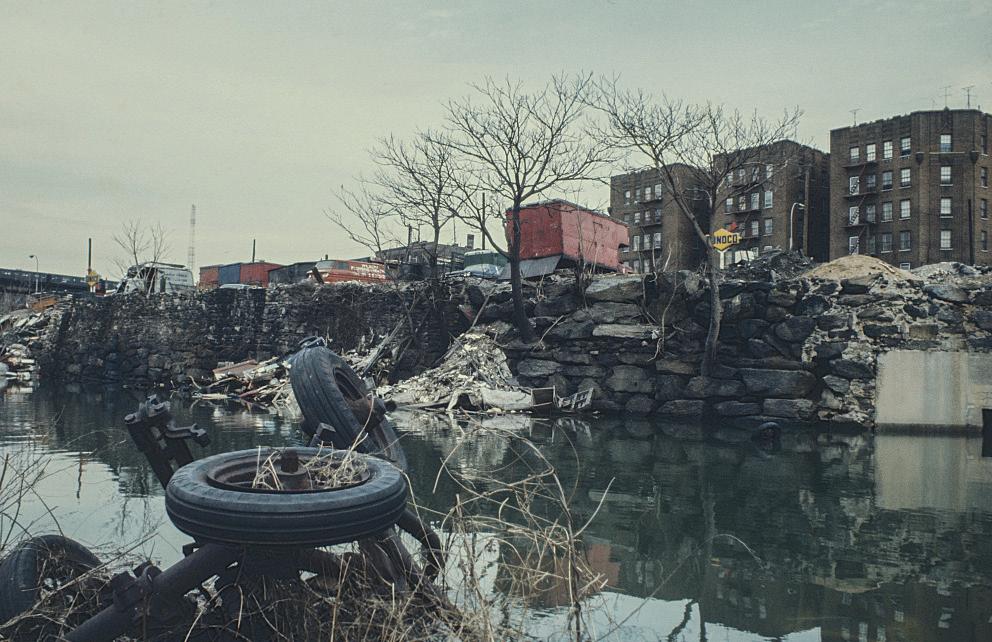
Justice, and the City Parks Foundation
Soon after the Alliance received its first foundation grant from The Trust, the indefatigable Linda Cox was recruited from the city Parks Department to become the Alliance’s first paid staff person, and its first executive director. Many might feel daunted to head a tiny organization with a huge mission, but Cox said that the audacious ambition of the Alliance is exactly what got her to take the plunge.
TAKING OUT THE TRASH
The Alliance estimates that together with its predecessors it has been responsible for removing close to 800 tons of garbage and debris from the river. Alliance staff remain vigilant in their stewardship of the river: a few months ago, they got the Department of Transportation to stop dumping debris from a Cross Bronx Expressway construction project into the river. Among the organization’s most ambitious projects is the Bronx River Greenway—a continuous ribbon of accessible green space along the river.
Complex and ambitious projects, such as the restoration of an urban river, require patient and persistent capital—the kind that community foundations and passionate philanthropists specialize in. Tens of millions in city and state capital has been invested in the river as a result of these community advocates.
This short history doesn’t do justice to the decades of struggle that it took to get there. The Trust is grateful to those who persisted, and proud to continue this commitment with them. n
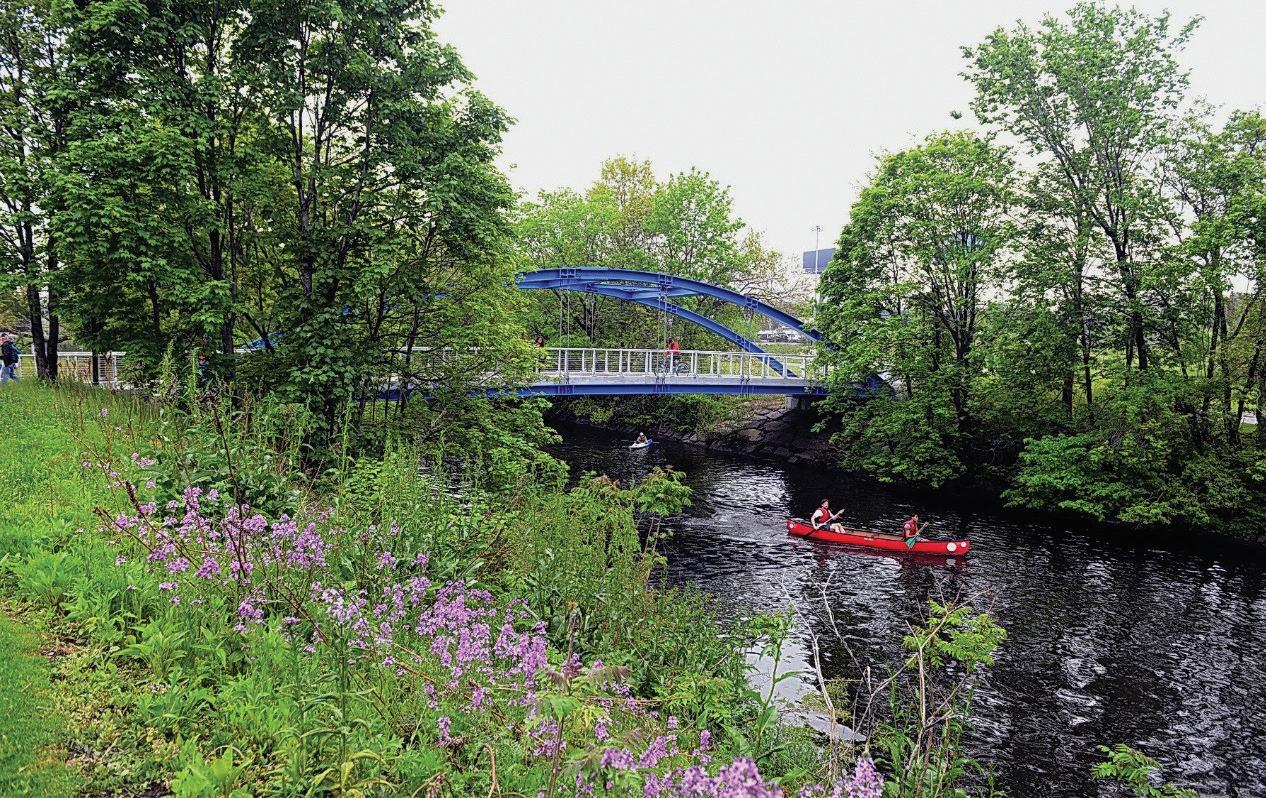
nycommunitytrust.org 8
FEATURE STORY
DOWN BY THE RIVERSIDE: Concerted actions from government and residents over the years have transformed the Bronx River.
Library of Congress, Prints & Photographs Division, photograph by Camilo José Vergara [reproduction number, LC-DIG-vrg-02427]
Photo courtesy of NYC Department of Design and Construction
“Thank you, Bronx humans!” – Exclusive interview!
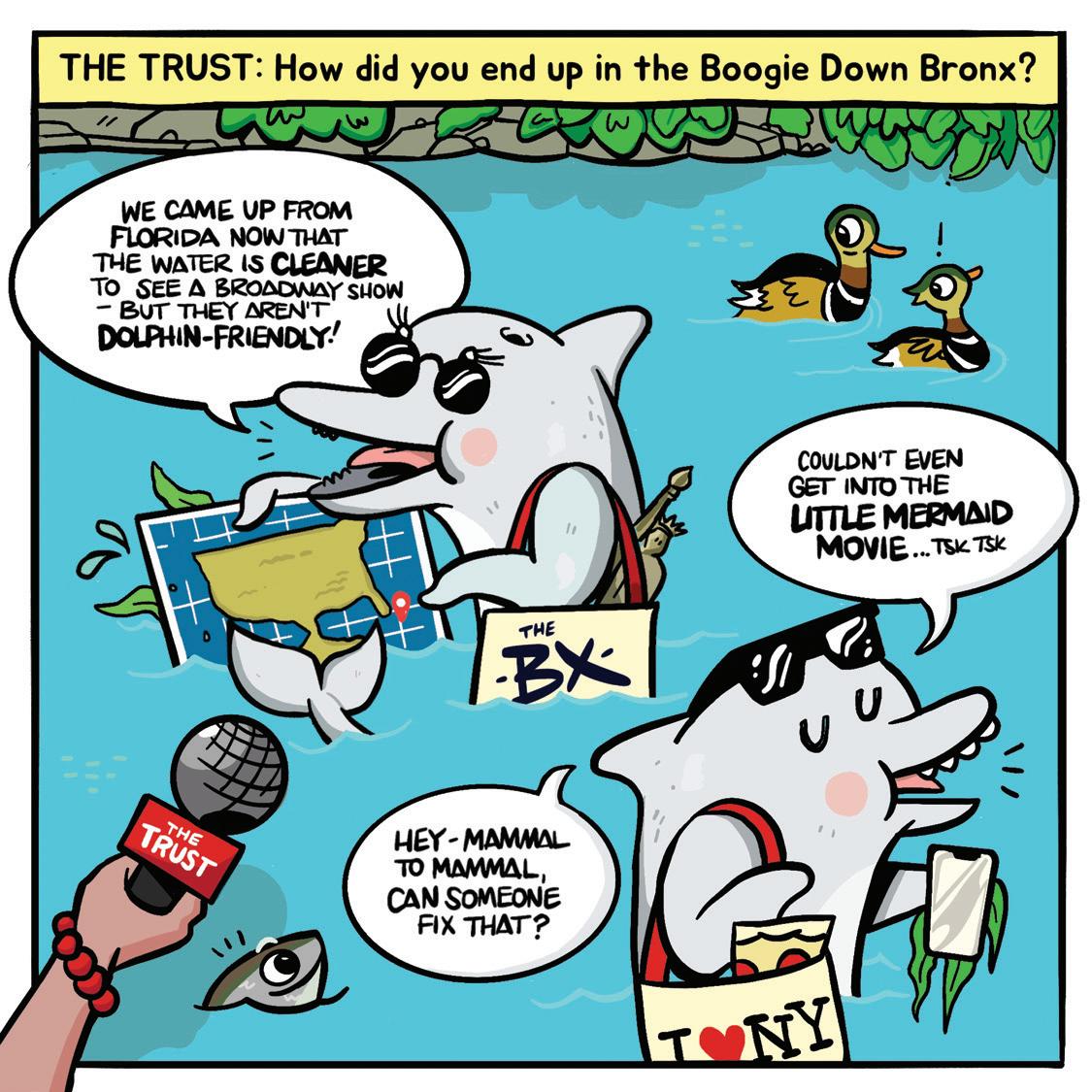
With so much news going on, you may have missed the story about the two dolphins spotted near Starlight Park along the Bronx River. Others broke the story, but we have the first interview with these unusual Big Apple tourists.
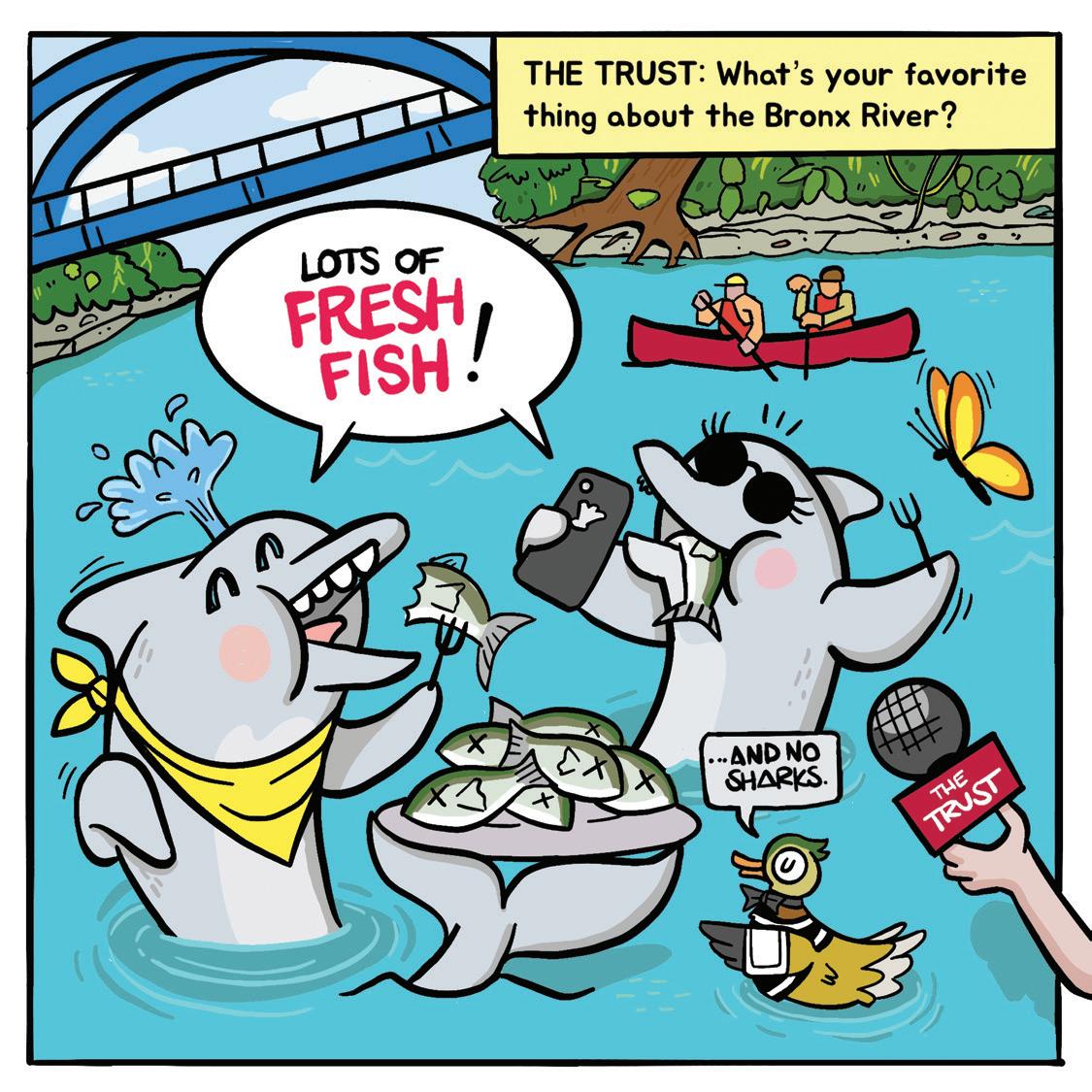
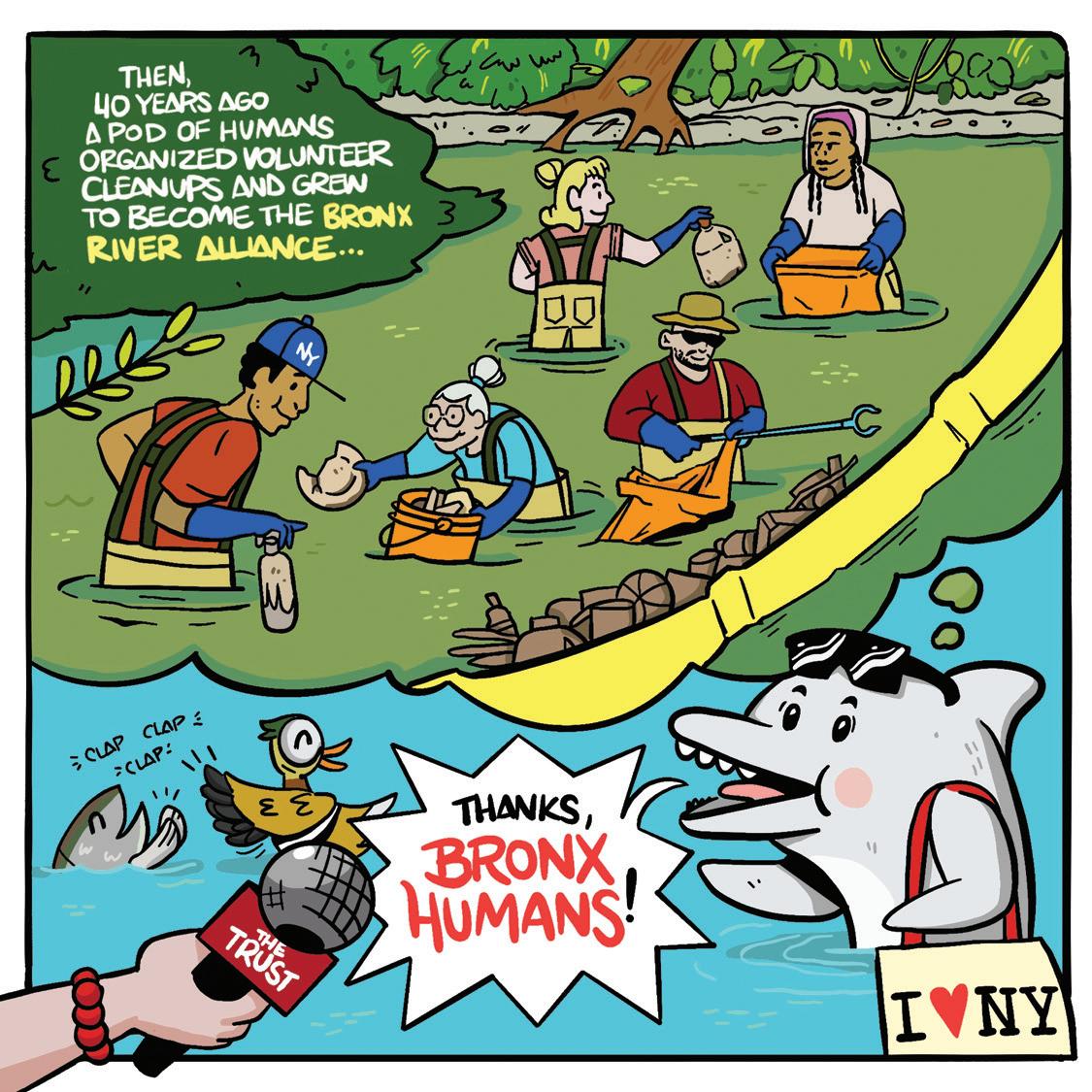
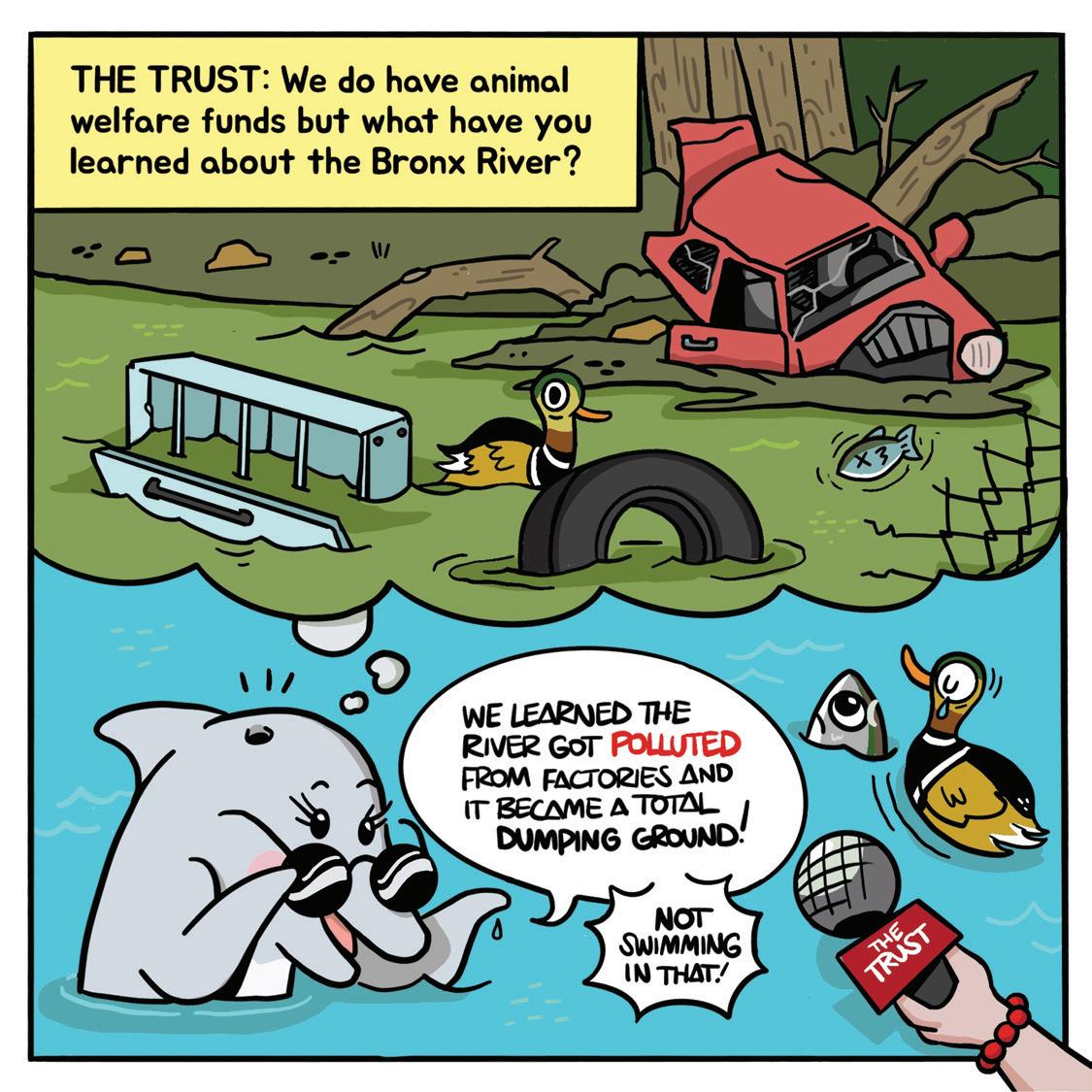
Grants Newsletter | Summer 2023 9
Comic illustrated by Jai the Sketch Guy/Jairu Ollennu
Leaders of color supported for work ahead
Eight years ago, organizational development experts
Brian Leander and Jennifer Rutledge recognized a need on Long Island to support nonprofit leaders of color. Even as the Island had grown more diverse—with people of color now making up one-third of the local population—nonprofit leadership had not.
To address these inequities, Leander and Rutledge created the Leading in Community program at Adelphi University’s Center for Nonprofit Leadership.
“The primary goal is to strengthen the leadership pipeline for people of color and prepare them to lead community nonprofits,” said Rutledge.
The eight-month program has received funding since its inception from our Long Island Community Foundation, and these days it also gets support from alumni, some of whom now serve as faculty.
“Leading in Community granted me visibility and access to a community of professionals who had insight and diverse cultural experiences,” said Christina Flythe, who was a member of the program’s first cohort and currently serves on the faculty, in addition to her role as director of health and nutrition at the Child Care Council of Suffolk.
The first of the program’s four stages focuses on personal leadership and addressing barriers like disparities in access to education and networking, as well as challenges stemming from internalized oppression and economic status.
“Dr. Leander had this vision of eliminating the barriers to leadership for people of color on Long
Island,” said Rutledge. “He and I knew right from the beginning: it wasn’t as much about skills as it was about confidence and access.”
During the first phase, participants reflect on their values and leadership styles and design a personal leadership plan.

For Flythe, this stage of the program stands out as a turning point. “When I came into the cohort I wasn’t sure what to expect,” she said. “But what I’ve gained is an increase in confidence and awareness.”
The second phase trains participants for organizational leadership, from directing teams and boards to managing finances and evaluating programs. The third phase focuses on community leadership. Participants learn strategies for rolling out a community initiative and develop capstone projects addressing a local issue.
The program, said Daniel Kaplan, faculty director at the Center for Nonprofit Leadership, “is about making change, sharing power, and focusing on the wellness of communities and the people within the communities.”
The final phase, which was added based on alumni feedback, focuses on participants’ mental and emotional health needs. Rutledge said this phase helps participants prepare for the challenges of leadership, taking into account “that they have their own barriers and issues to navigate as people of color, and making sure they don’t experience burnout, that they can manage stress and handle trauma-related incidents and environments.” n
nycommunitytrust.org 10
LONG ISLAND
SHAPING THE FUTURE: Leading in Community participants collaborate on their capstone project at Adelphi University’s Center for Nonprofit Leadership
Photo courtesy of Center for Nonprofit Leadership
Where there’s a will, there’s a heartfelt talk
Among his long list of job responsibilities as executive director of our Long Island Community Foundation, David Okorn includes matchmaking.
Not The Bachelor reality-show kind, but helping Long Islanders find ongoing ways to express their passion for the causes dear to them.
“Talking with potential donors,” Okorn said, “is one of the most exciting things about my work. Everyone’s philanthropy is different and it’s often based on their life experiences and values. I see us as matchmakers between people looking to give money to charity, and the charities that are on the front lines addressing the issues.”
DISCUSSIONS ABOUT VALUES
Often these heartfelt discussions about people’s values start in the offices of professional advisors when clients talk about how to make plans for their estate. Okorn said trusts and estate attorneys and wealth advisors value these conversations and the involvement of Trust staff.
“It’s a big part of why professional advisors like working with us,” Okorn said. “They get to know their clients on a much deeper level. They learn about what these individuals are passionate about.”
Legal and financial professionals are happy to discover a new tool for their estate-planning toolkit. While someone writing a will might approach them with the idea of leaving a one-time gift to a nonprofit, Okorn said, professional advisors might say: “That’s great. That’s one way to do it, but another way is through a community foundation—and then you’ll have someone looking after your interests long after you’re gone, so your charitable intent is carried out the way you want.”
LEARNING ABOUT LONG ISLAND
To keep professional advisors abreast of developments in their fields, our Long Island affiliate holds events twice a year where they can receive continuing education credits while also hearing from a local nonprofit helping Long Islanders.
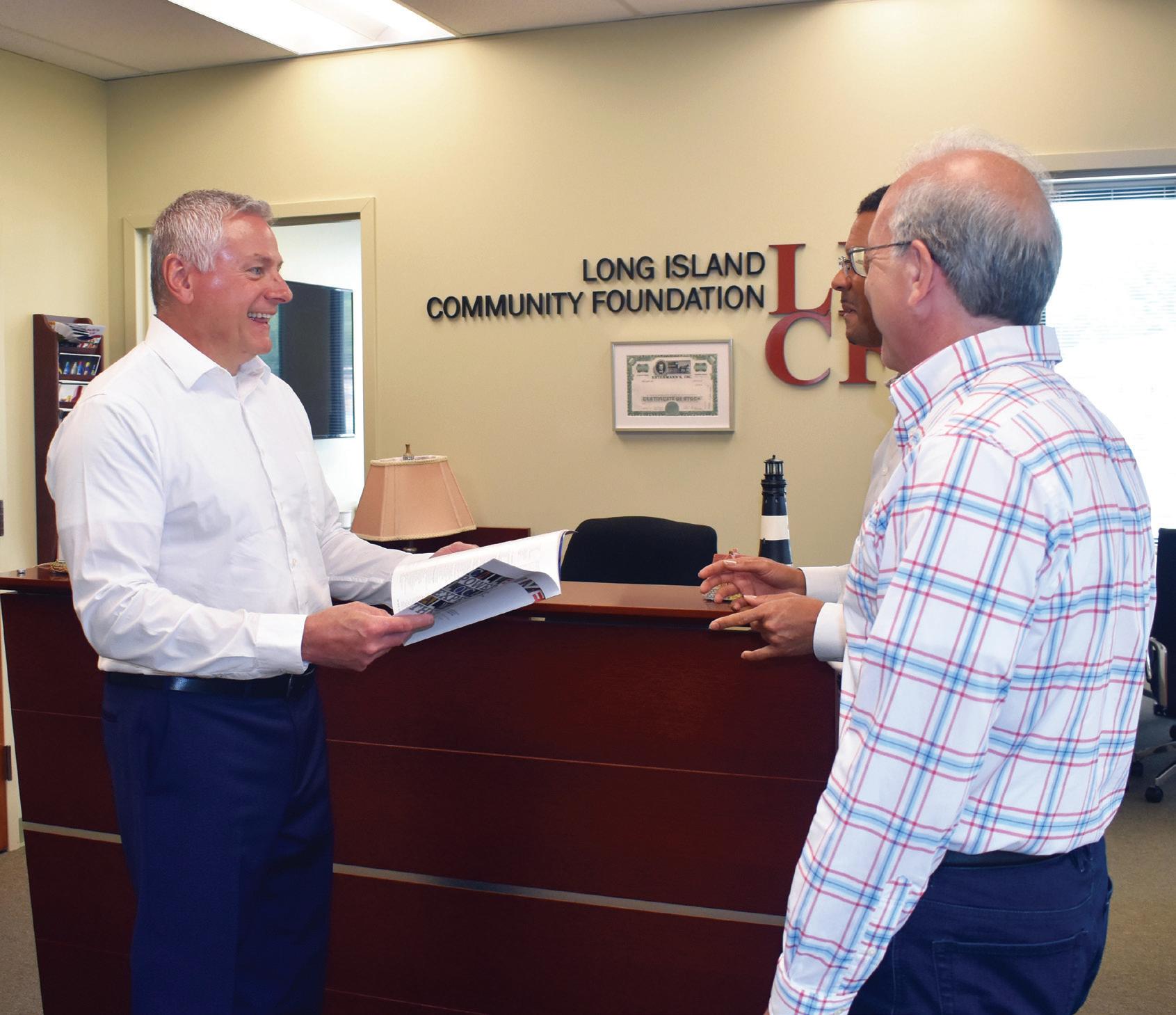
“For many folks,” Okorn said of the nonprofit presentations, “it is kind of eye opening. Many people will say, ‘Wow, I didn’t know there were 300,000 people on Long Island who regularly have to worry about being able to feed themselves and their families.’ Or they won’t know that there is a huge mentalhealth crisis among our young people. Often they think, ‘Oh, that’s
somewhere else, that’s not here.’”
Through all these interactions, Okorn said, professional advisors learn about the breadth and depth of his team’s expertise. “What happens is once we work with an advisor, they see how we help their clients achieve their philanthropic goals. It helps strengthen their relationship with their client.” n
Scan this QR code to hear from some of the professional advisors who work with us.
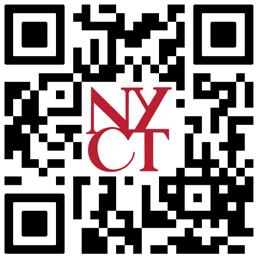
Grants Newsletter | Summer 2023 11
ISLAND LIFE: David Okorn, left, executive director of our Long Island Community Foundation, talks with two visitors about The Trust’s work.
It takes a village to reimagine a village
In many ways, Ossining is a microcosm of Westchester—a changing community composed of people with widely differing backgrounds and needs. Our Westchester Community Foundation has long been part of the collaborative efforts to reshape the Hudson hamlet.
“This is an amazing community,” said Laura Rossi, executive director of our Westchester Community Foundation. “We are delighted to see our work developing the capacity of nonprofits and convening donors coming to fruition in so many ways.”
In 1813, Sing Sing became the first state-chartered village in Westchester. A century later, the village changed its name to Ossining in order to distance itself from the infamous granite prison erected in the late 1820s and that remains its largest employer.
CHANGES IN OSSINING
Today, the school system reflects the village’s evolving demographics and needs. Sixty-five percent of students are Latinx, and more than 60 percent of children qualify for free or reduced lunch. Our grants to the Ossining Union Free School District are helping meet the mental-health needs of students and their families, and providing expertise on how to successfully create a high school pre-apprenticeship program that can lead to manufacturing jobs in Ossining.
This year, the Foundation also worked with four village residents to establish the Ossining BELL Equity Fund, which is aimed at removing barriers to success for local public-school students.
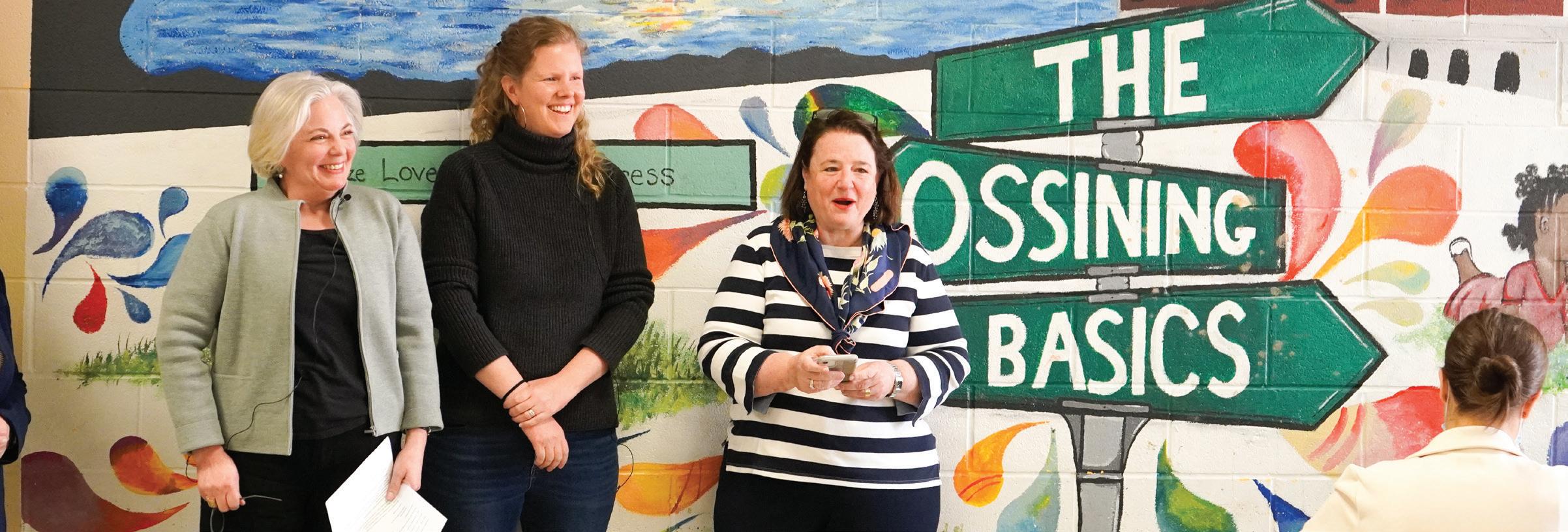
To bring attention to Ossining’s progress, we arranged a downtown walking tour where visitors
learned about Open Door Family Medical Center, a free health clinic that began in a church basement with volunteer doctors. Today, it serves 60,000 people a year with medical, dental, and behavioral-health services. A new campus in the heart of the village will strengthen its presence, integrate behavioral health care into primary care, and promote wellness in the African American community.
HELPING KIDS DEVELOP
Another stop on the tour was the 128-year-old Ossining Children’s Center, which was founded to serve the children of immigrant widows, and was one of the first day care centers in the country. Our grants expanded its capacity to help low-income families meet the needs of children with disabilities. “One of Ossining’s strengths is the cultural and economic diversity of the community,” said Howard Milbert, the Center’s executive director. “Every child’s experience is enriched when they are learning with children of different backgrounds.”
Mayor Rika Levin said that $30 million in federal and state funding, awarded over the past four years, will make Ossining more walkable, bikeable, and attractive to visitors, residents, and businesses alike. The resulting public-private partnerships will create mixed-use developments, affordable housing, and a multi-modal transportation hub, along with enhanced outdoor and indoor recreation and entertainment space.
“Ossining is such a welcoming community,” Rossi said. “The Foundation is happy to facilitate people coming together to help their neighbors, whatever challenges may arise.” n
nycommunitytrust.org 12 WESTCHESTER
OUR TOWN: Ossining Mayor Rika Levin (right) outlines future plans along with Westchester Community Foundation
Executive Director Laura Rossi and Chair Sarah Jones-Maturo.
Photo by Copy & Art
Growing Latinx nonprofits over time
As the Latinx population in Westchester began to rise in the early 2000s, our Westchester Community Foundation engaged donors and invested in local organizations that wanted to grow with the community.
Today, with the support of the Foundation, several organizations have become multi-service agencies with leaders who are respected advocates for immigrants on a statewide level.
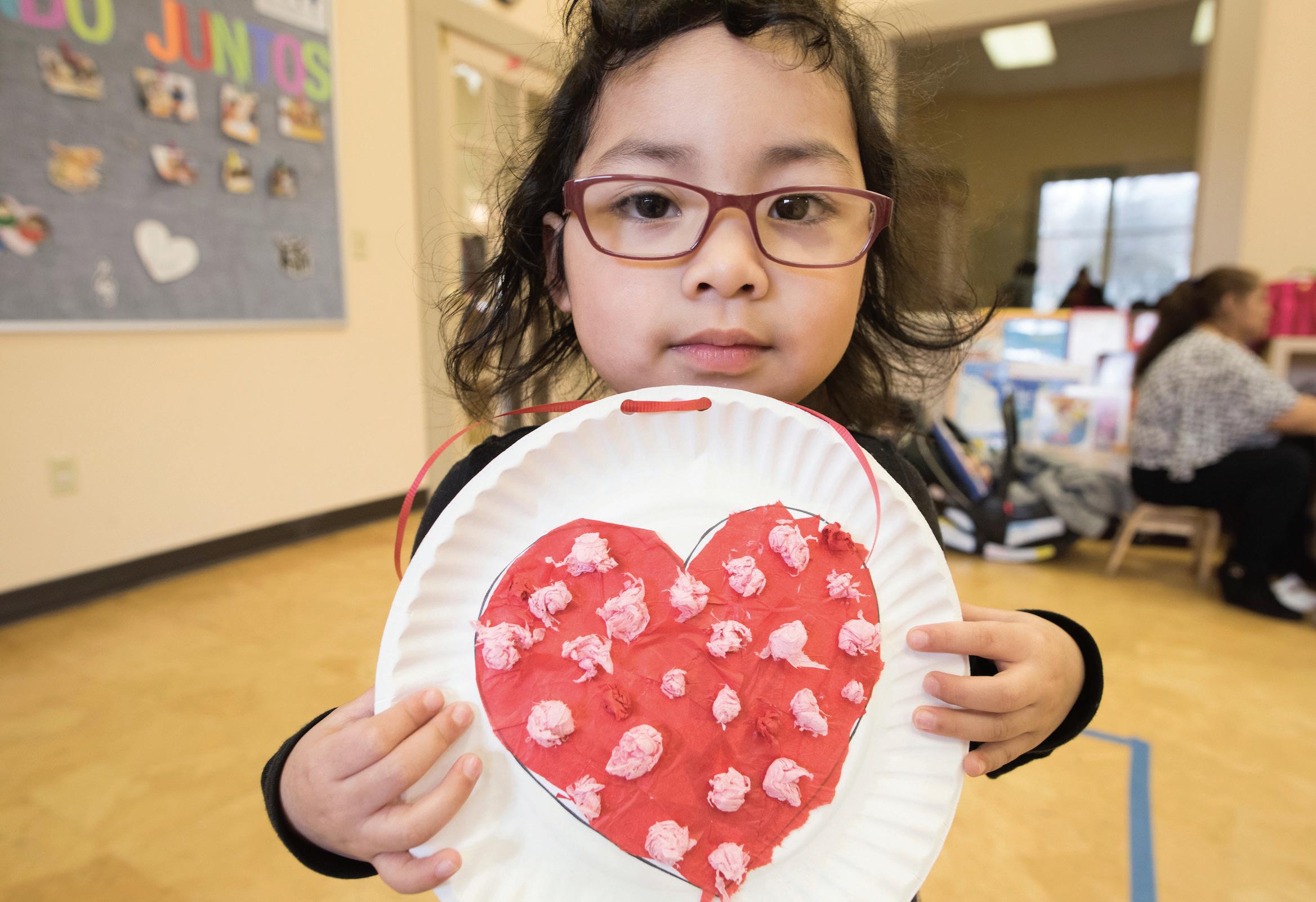
WIDENING IMPACT
“It’s been great to see these nonprofits—many of them led by women—really come into their own,” said Laura Rossi, executive director of our Westchester Community Foundation. “Not only have they strengthened the depth and breadth of their direct services, but they are now pushing for needed reforms in government policies. The result has been that thousands of immigrant families have successfully established themselves across the county.”
The arc of our investments mirrors the growth in the county’s Latinx population, which has risen 30 percent since 2010 to 269,334 residents—or 27 percent—making it the second largest group in Westchester. These residents trace their heritage to different countries and have a range of financial resources, job prospects, education levels, and needs.
These ongoing efforts really took root with the creation of the Apoyo Fund in the Westchester Community Foundation in 2002. At that time, a national group, Hispanics in Philanthropy, chose Westchester for a matching grant program to raise dollars for promising nonprofits, develop emerging leaders, and attract new
Latinx donors. While the program ended in 2016, we have continued to make grants to many of its grantees.
BUILDING CAPACITY IN THE COUNTY
With an eye toward the future, the Apoyo Fund gave the Mamaroneckbased Community Resource Center (then called the Hispanic Resource Center) a grant in 2014 to create a strategic plan. Since then, the Center has grown from making referrals to other organizations to offering its own comprehensive array of direct services. Recent Westchester grants funded English-as-a-secondlanguage classes, immigration legal services, and know-your-rights workshops for domestic workers and day laborers to protect them from wage theft and unsafe working conditions. The Center’s advocacy efforts included the statewide campaign for drivers licenses for immigrants as well as a countywide push for affordable housing and
to ensure renters have a right to counsel in eviction proceedings.
Formed in Mount Kisco in 2001, Neighbors Link received an Apoyo grant in 2011 to help evaluate its impact in the community and plot its growth. Now it has three locations in the county, serving immigrants from more than 75 countries. It offers education services, early childcare and afterschool programs, as well as job training throughout the Lower Hudson Valley. In addition, it advocates for immigrant rights and access to affordable healthcare statewide.
El Centro Hispano got its start in White Plains in 1974, and became an independent entity in 2000. Our support, which included an Apoyo capacity-building grant, helped it grow to provide 25 different critical services—from job training and English classes to healthcare assistance. n
Grants Newsletter | Summer 2023 13
HEART STRINGS: A young artist exhibits their work at the Neighbors Link early childcare program. Photo by Randy Matusow
Donors create everlasting commitment to a cause
Donors often want to create charitable legacies that ensure their dedication to an issue can last for generations. These examples created through estate plans show how easy it is to leave a lasting gift through your will.
An enduring gift to protect Westchester’s environment
Rita and Stanley Wecker created a permanent fund in our Westchester Community Foundation for environmental conservation and education.
A professor and an engineer: Stanley was a professor of ecology at City College of New York. Rita was a pioneering woman in computing, and designed systems for Reader’s Digest and provided technical support for the world’s first computers. They loved to travel, birdwatch, garden, and care for their beloved dogs.
Fueling environmentalism in Westchester: We recently used their fund to help the Children’s Environmental Literacy Foundation promote environmental literacy in Westchester schools. We also funded the Westchester Land Trust to restore native plants and create trails through Glenwood Lake Park in New Rochelle.
A memorial for a beloved mother
The Elena Gildersleeve Fund was created by John Middleton, in honor of his late mother, to benefit older adults in need of housing and medical or nursing care.
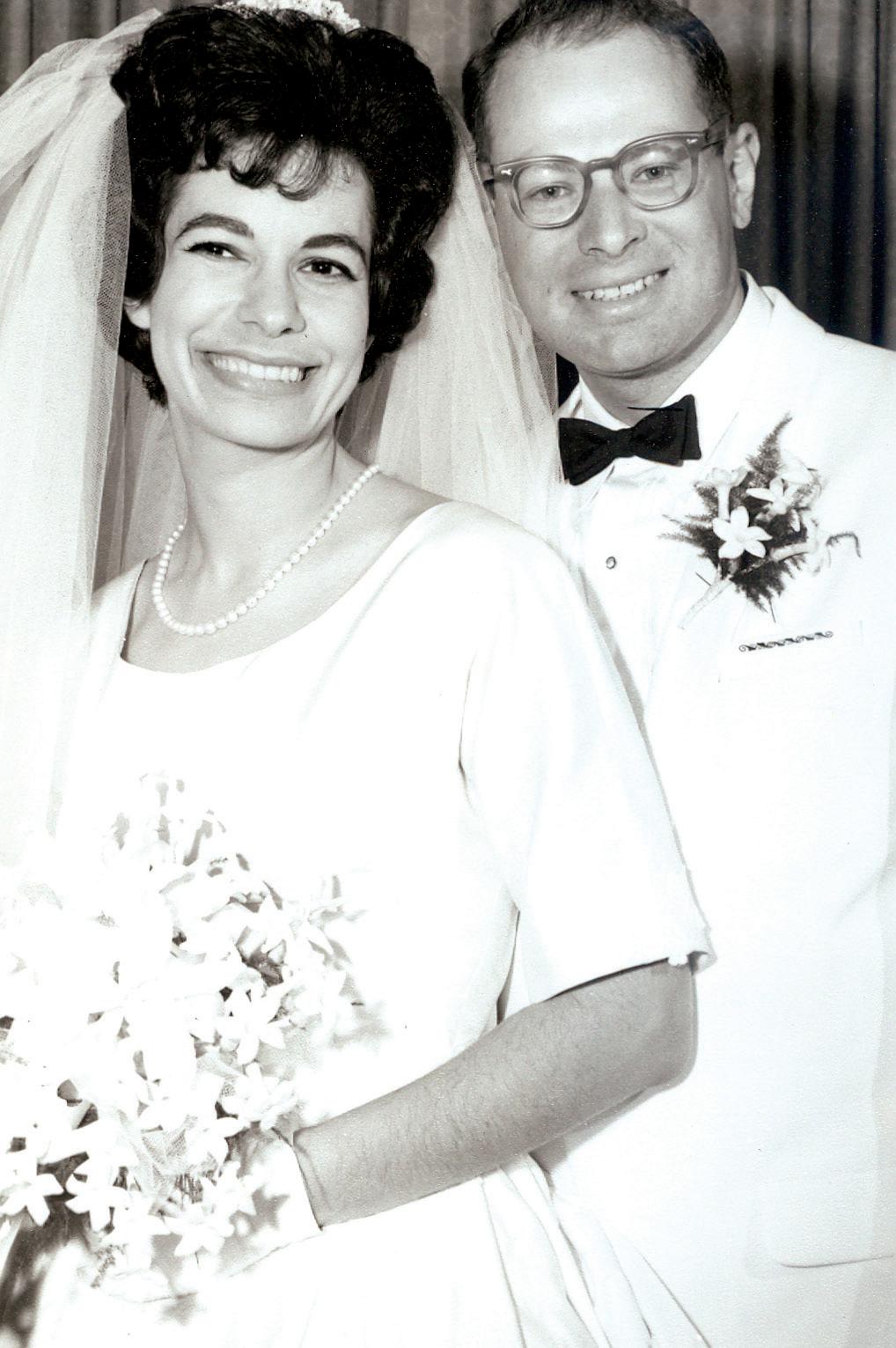
A Spanish immigrant and author: Elena Gildersleeve was born in San Sebastian, Spain, in 1883. She lived in Spain and Cuba before moving with her family to New York at the beginning of the 20th century. She had a son during her first marriage and later married Basil Gildersleeve, who taught Latin and Greek. They lived in Lawrence, Long Island, where she was known for her love of the arts, poetry, and cooking. She wrote a book, Baby Epicure, with recipes for children.
Improving the lives of older adults: This fund has made grants to nonprofits that ensure older adults can lead independent, fulfilling, and healthy lives. A recent grant to the Service Program for Older People (SPOP) provides mental health services to older adults who have experienced trauma.
A fund focused on finding purpose from life experience
Corinne Frear created a permanent fund for cancer and deafness research, resettlement of the homeless, and medical services for those in need.
Humanitarian New Yorkers: Both Corinne and her husband, Frederick, hailed from Troy, New York. Her family was in the furniture business, and Frederick’s family owned the popular Frear’s Toy Cash Bazaar, “the largest and most fantastic store in upstate New York.” Corinne was deaf, or nearly so, throughout her adult life, and both she and her husband passed away from cancer.
Scan this QR code to learn about other donors who left legacy gifts in their wills.
Addressing hearing loss and homelessness: Her fund recently helped the Hospital for Special Surgery study hearing loss in young patients with brittle bone disease and Urban Pathways develop supportive housing for formerly unhoused people.

nycommunitytrust.org 14 YOUR PHILANTHROPY
The Weckers on their wedding day, June 14, 1964.
Sharing stories
Even before the pandemic, experts were sounding the alarm on the rise in social isolation among older adults. With our support, the Vita Story Club is helping by creating telephone-based “clubs” of homebound older adults. During the meetings, participants are asked questions to prompt stories and memories. Feel free to use Vita’s questions to spark connections with your family and friends:

• What was the greatest historical event you lived through?
• What person comes to mind when you hear the word “hero”?
• Tell a story about an act of love.
• Can you describe the neighborhood you grew up in?
• If you could have dinner with anyone, dead or alive, who would it be and what would you ask them?
Meet a donor...
Sandra S. Branch (1936-2013) Building a feminist arts community

Sandra Branch came to New York in the 1960s as a textile designer, artist, and teacher at the Little Red School House in Greenwich Village. Branch had the peripatetic childhood of an Army officer’s daughter, earned a master’s degree in fine arts, traveled solo through Europe, and then found a home in downtown Manhattan, settling into a fourth-floor walk-up loft on Canal Street.
One day in 1979 she spotted a notice in a local laundromat for the New York Feminist Art Institute. She began taking classes there and meeting other women artists, eventually working with some to create Ceres Gallery, which opened in 1984.
“The most important thing is: it was a community,” Branch once told an interviewer.
The Sandra S. Branch Fund was created, following her death, in The New York Community Trust for arts and education programs for low-income children in the city.
Your community needs you!
Looking for an easy way to help dozens of groups making life better in our community? Give to our Community Needs Fund, which has awarded grants to improve student literacy, prevent opioid overdoses, and stand up for the rights of asylum seekers. Join our community of donors to provide a critical safety net for the most vulnerable.
Scan this QR code to find out more, or contact us at giving@nyct-cfi.org
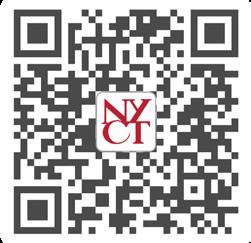
(212) 686-0010 x363
Financial information about The New York Community Trust can be obtained by contacting us at: 909 Third Avenue, 22nd Floor, New York, New York 10022, (212) 686-0010, at www.nycommunitytrust.org, or as stated below: Florida: SC No. CH9514 A COPY OF THE OFFICIAL REGISTRATION AND FINANCIAL INFORMATION MAY BE OBTAINED FROM THE DIVISION OF CONSUMER SERVICES BY CALLING TOLL-FREE, WITHIN THE STATE, 1-800-HELP-FLA OR AT www.FloridaConsumerHelp. com REGISTRATION DOES NOT IMPLY ENDORSEMENT, APPROVAL, OR RECOMMENDATION BY THE STATE.
Maryland: For the cost of postage and copying, from the Secretary of State. Michigan: MICS No. 22265.
Mississippi: The official registration and financial information of The New York Community Trust may be obtained from the Mississippi Secretary of State’s office by calling 1-888-236-6167. New Jersey: INFORMATION FILED WITH THE ATTORNEY GENERAL CONCERNING THIS CHARITABLE SOLICITATION AND THE PERCENTAGE OF CONTRIBUTIONS RECEIVED BY THE CHARITY DURING THE LAST REPORTING PERIOD THAT WERE DEDICATED TO THE CHARITABLE PURPOSE MAY BE OBTAINED FROM THE ATTORNEY GENERAL OF THE STATE OF NEW JERSEY BY CALLING (973) 504-6215 AND IS AVAILABLE ON THE INTERNET AT http://www.state.nj.us/lps/ca/charfrm/ htm. New York: A copy of our most recent financial report is available from the Charities Registry on the New York State Attorney General’s website at www.charitiesnys.com or, upon request, by contacting the NYS Attorney General, Charities Bureau, at 120 Broadway, New York, NY 10271 or at 212-4168401. North Carolina: Financial information about this organization and a copy of its license are available from the State Solicitation Licensing Branch at (888) 830-4989 (within N.C.) or (919) 814-5400 (outside N.C.).
Pennsylvania: The official registration and financial information of The New York Community Trust may be obtained from the Pennsylvania Department of State by calling toll-free, within Pennsylvania, 1-800-732-0999.
Virginia: From the State Office of Consumer Affairs in the Department of Agriculture and Consumer Affairs, P.O. Box 1163, Richmond, VA 23218. Washington: From the Charities Program at 1-800-332-4483, or www. sos.wa.gov/charities. West Virginia: West Virginia residents may obtain a summary of the registration and financial documents from the Secretary of State, State Capitol, Charleston, WV 25305. Wisconsin: A financial statement of the organization disclosing assets, liabilities, fund balances, revenue and expenses for the preceding fiscal year will be provided to any person upon request. CONTRIBUTIONS ARE DEDUCTIBLE FOR FEDERAL INCOME TAX PURPOSES IN ACCORDANCE WITH APPLICABLE LAW. REGISTRATION IN A STATE DOES NOT IMPLY ENDORSEMENT, APPROVAL, OR RECOMMENDATION OF THE NEW YORK COMMUNITY TRUST BY THE STATE.
Grants Newsletter | Summer 2023 15 NEW YORK MINUTE
909 Third Avenue, 22nd Floor
New York, NY 10022
nycommunitytrust.org
Address Service Requested
The healing power of honoring loved ones

The grief of losing a loved one can make us feel helpless. Many of our donors find solace in creating a fund in the name of a loved one. They see it as a way to honor those who have passed and to imbue meaning to the loss. Funds are created in memory of grandparents, beloved teachers, and family members taken too soon.
Some donors direct us to use their gifts to fight a disease or honor those who have passed by supporting their passions, such as dance, education, or community gardens. We also have donor-advisors who name their fund after loved ones and suggest grants to help a range of causes.
To learn more about how you can give with us, contact (212) 686-0010 x363 or giving@nyct-cfi.org.
Connect with us!
We’d like to hear from you. Please contact us with questions or comments: (212) 686-0010 or info@nyct-cfi.org

Nonprofit Org. U.S. Postage PAID Permit No. 1534 Hackensack, NJ

























